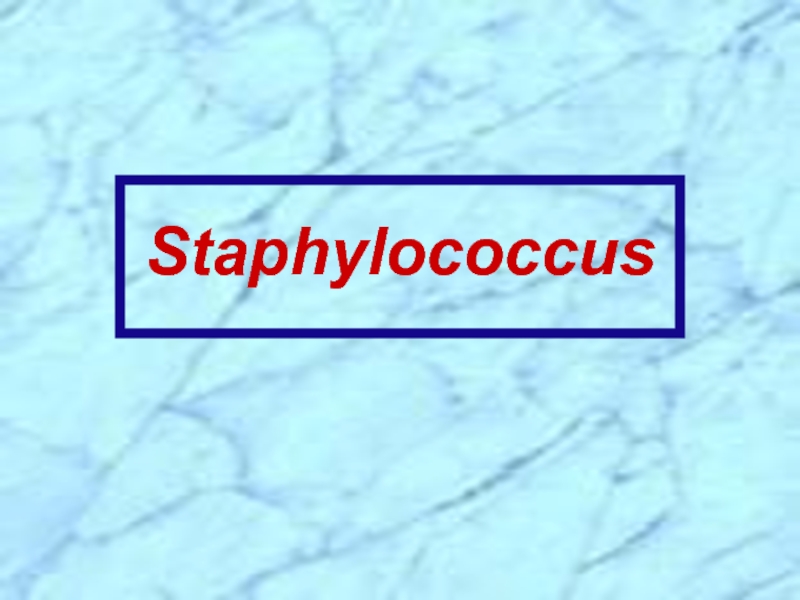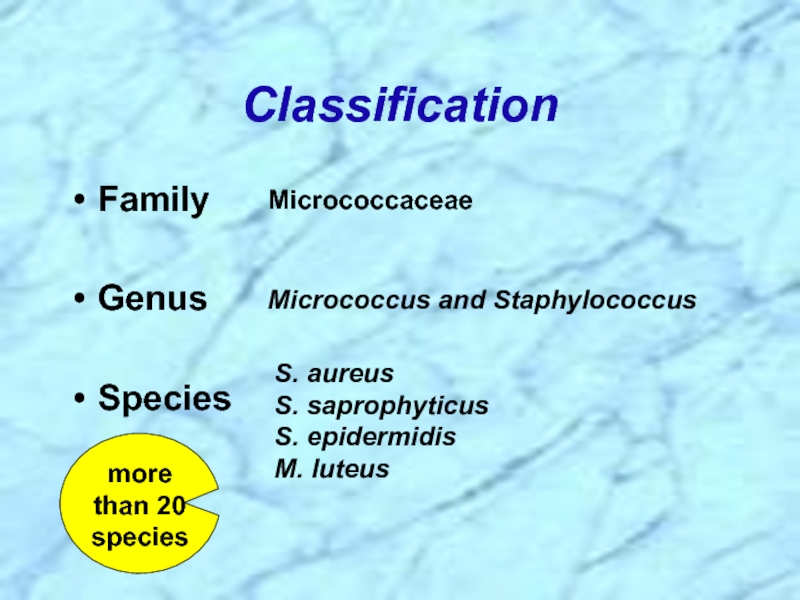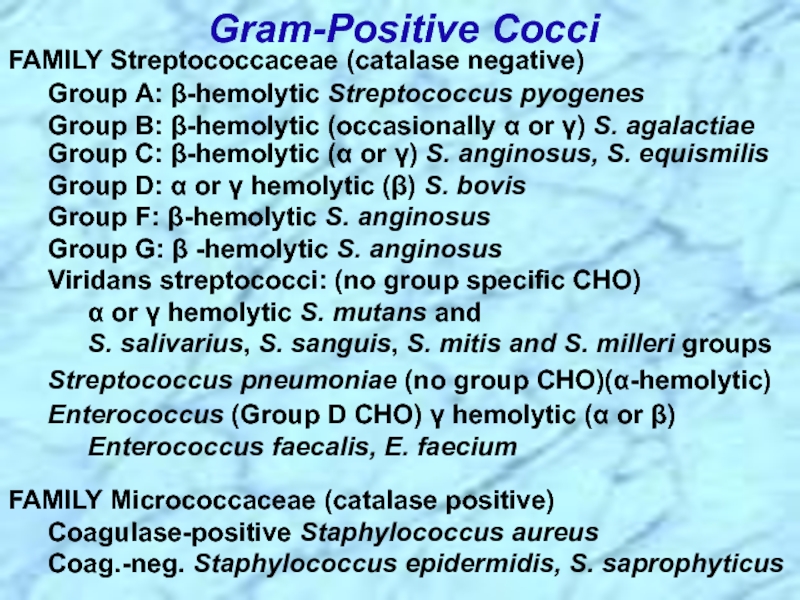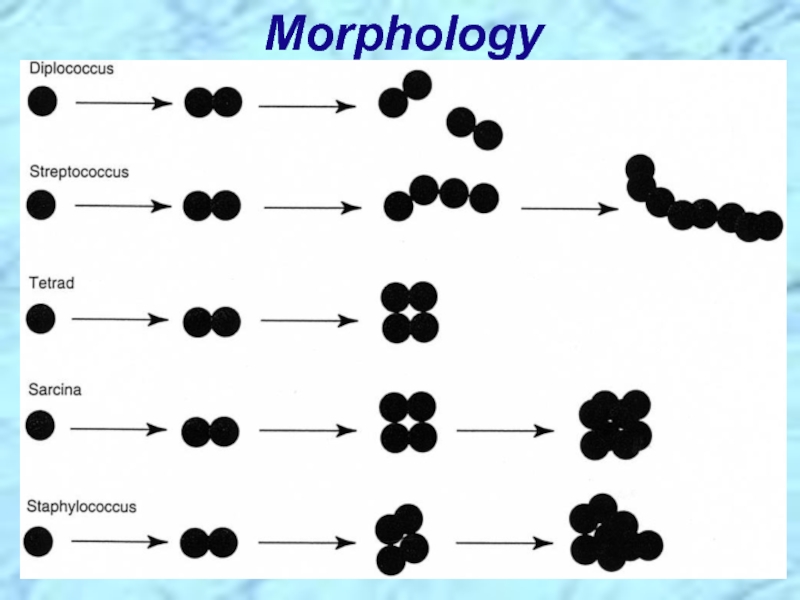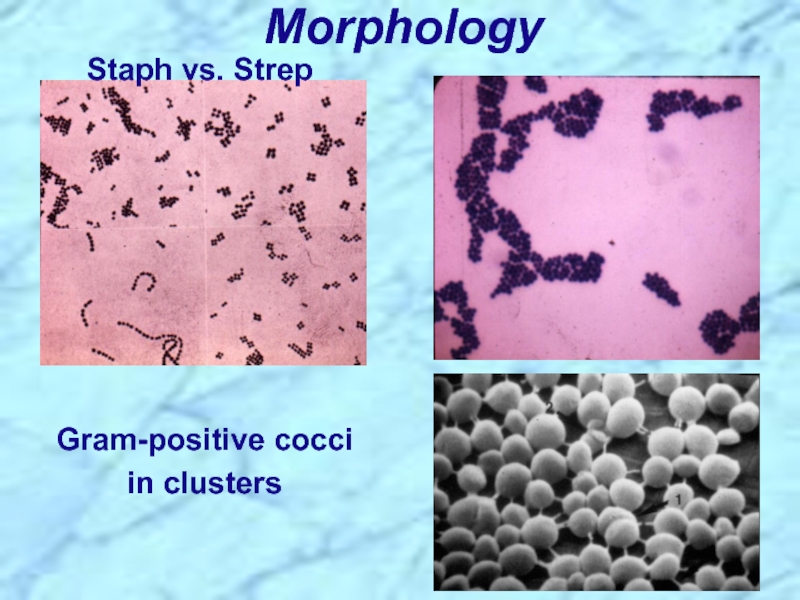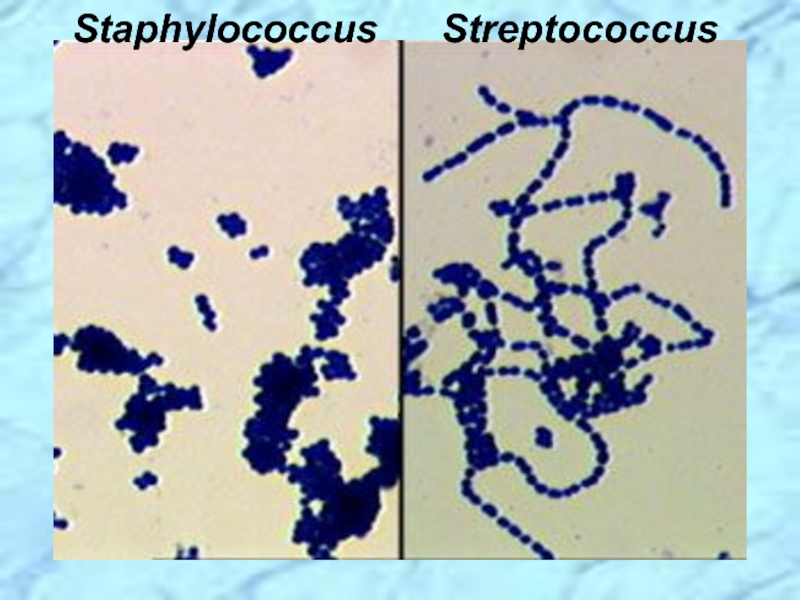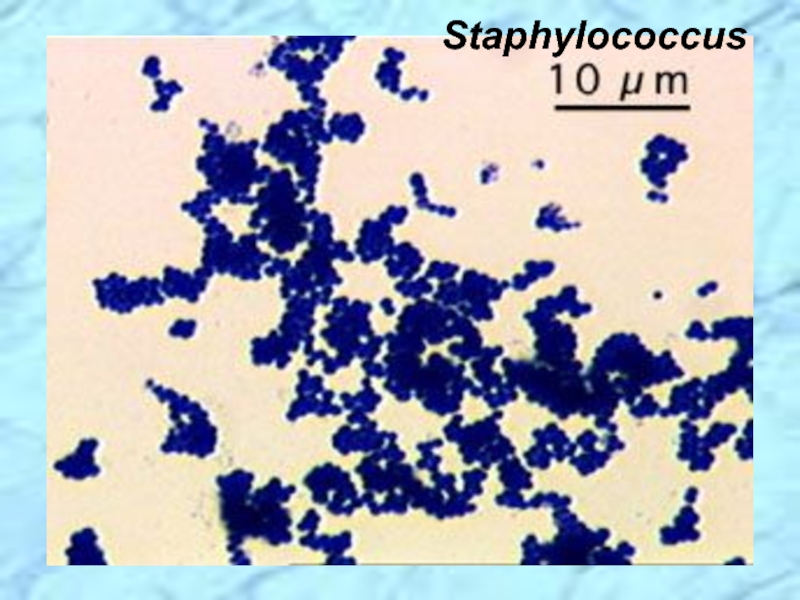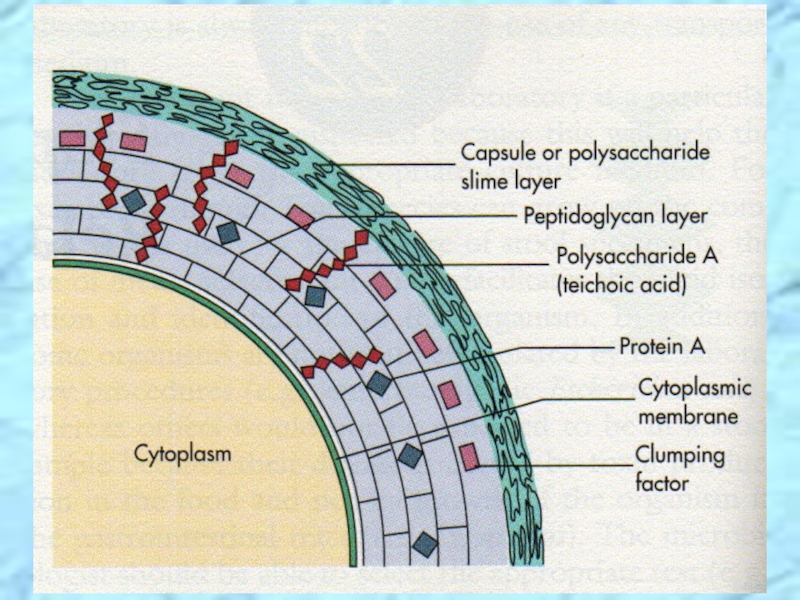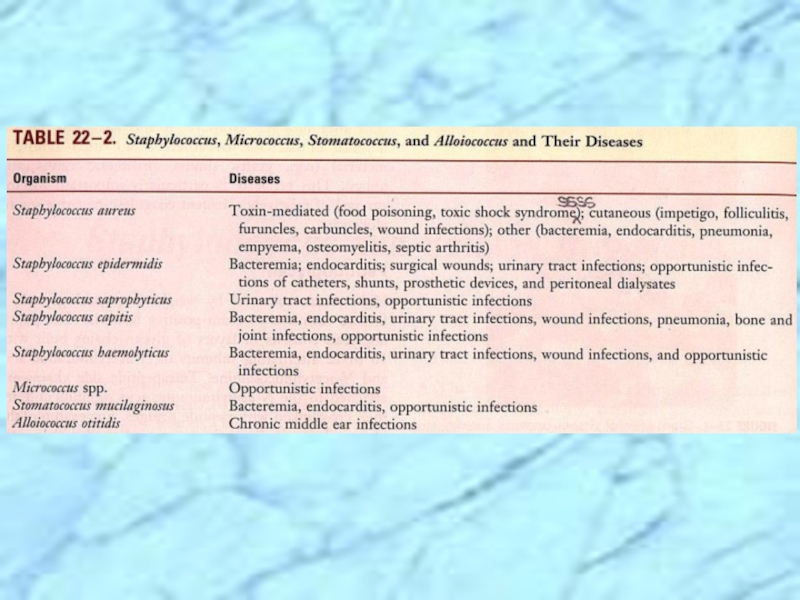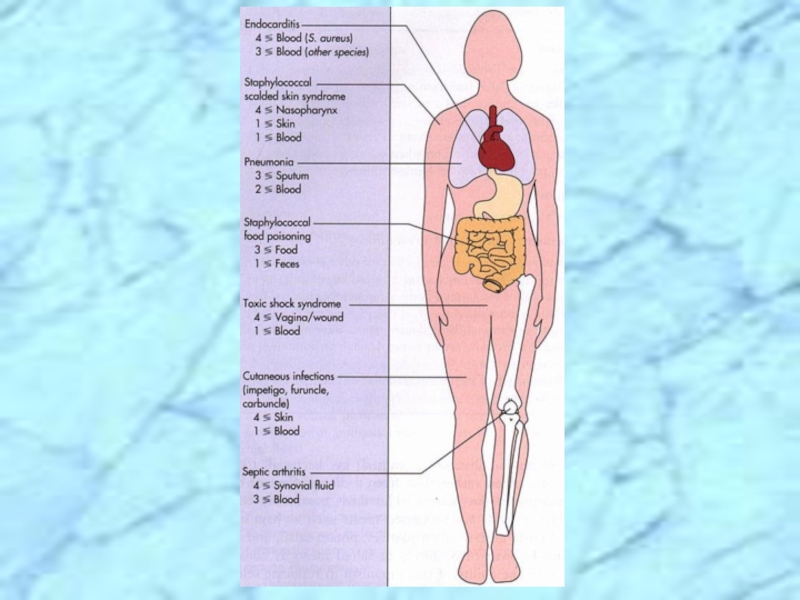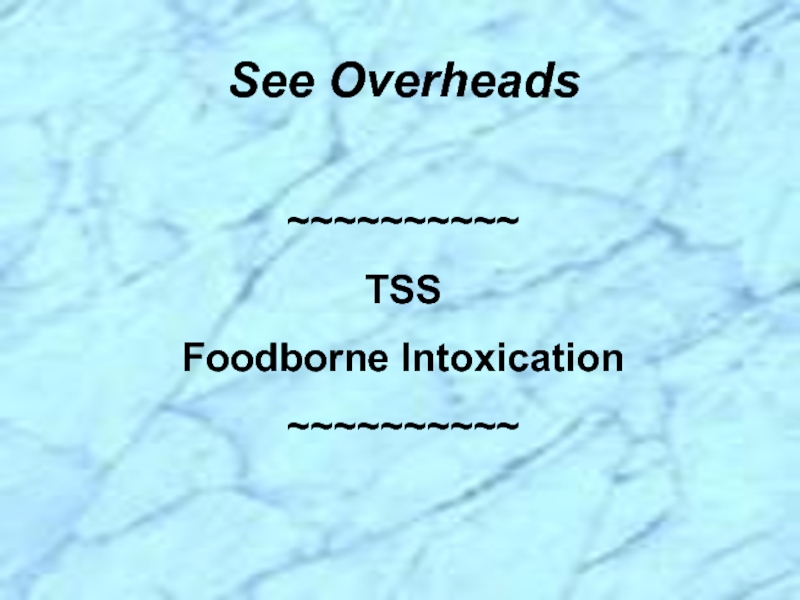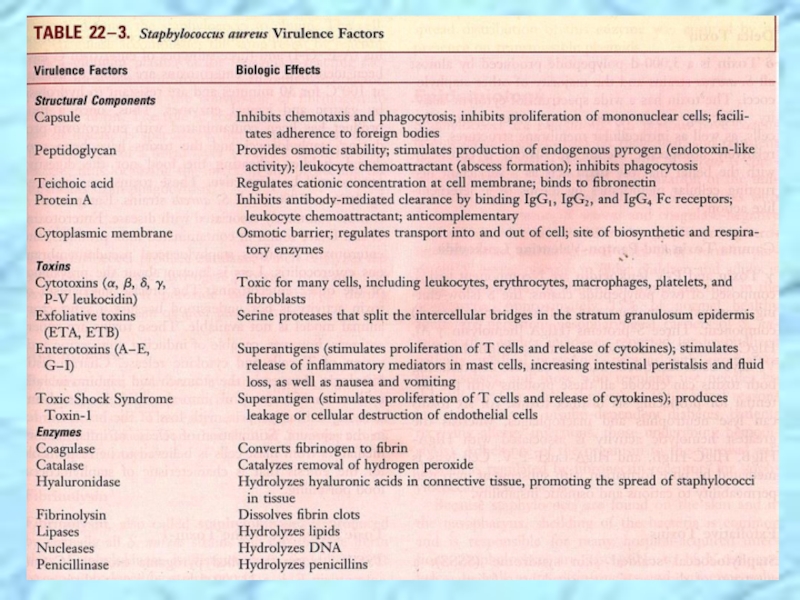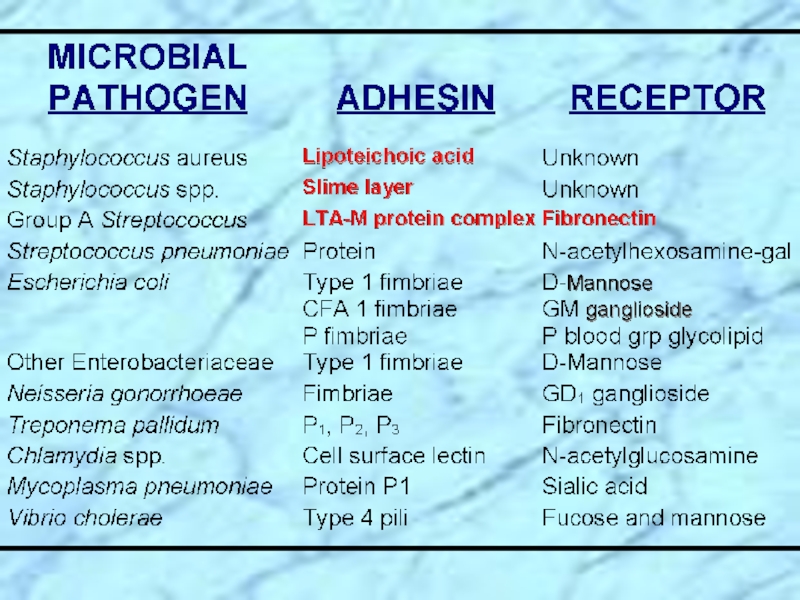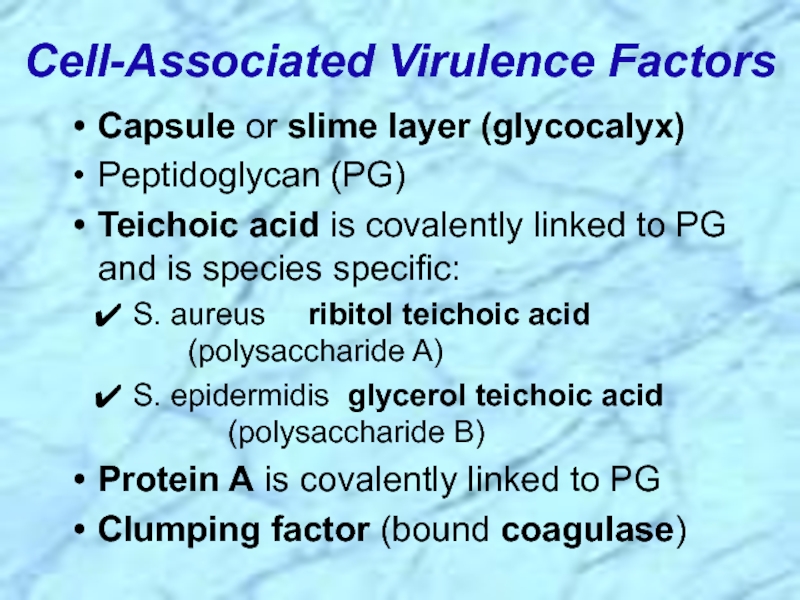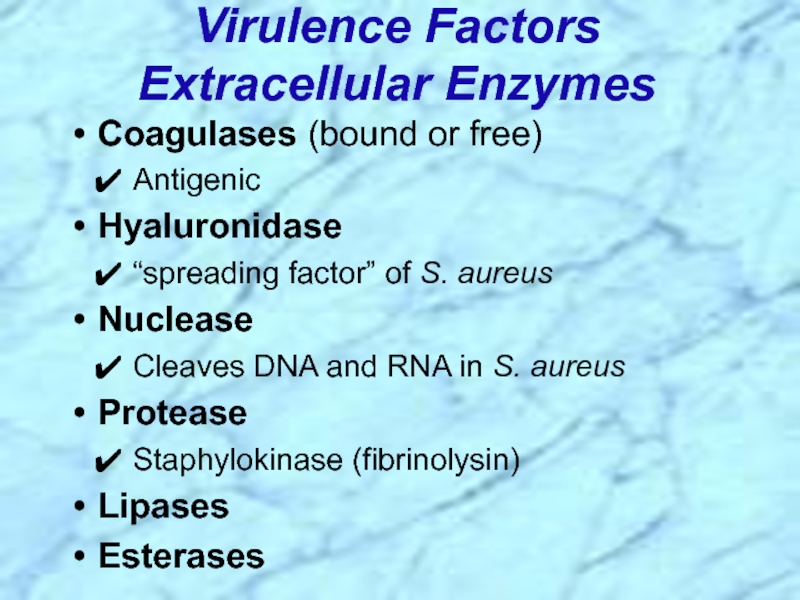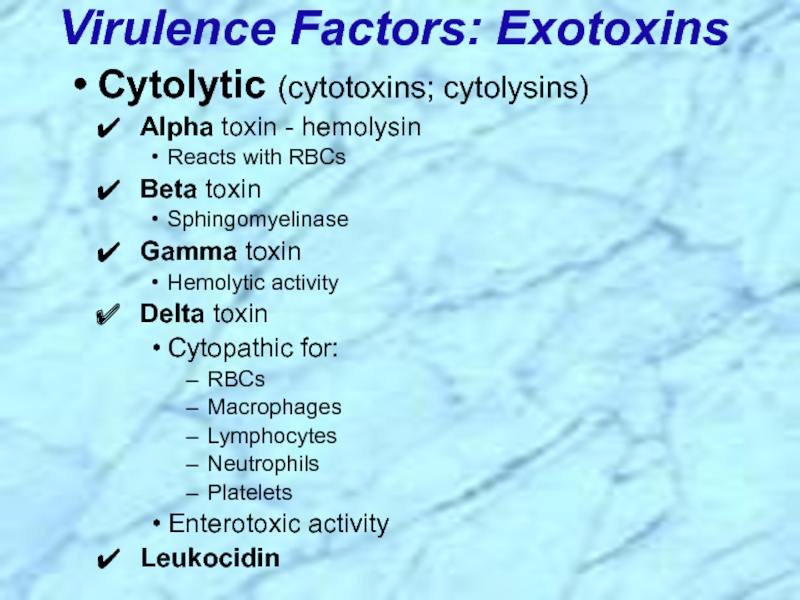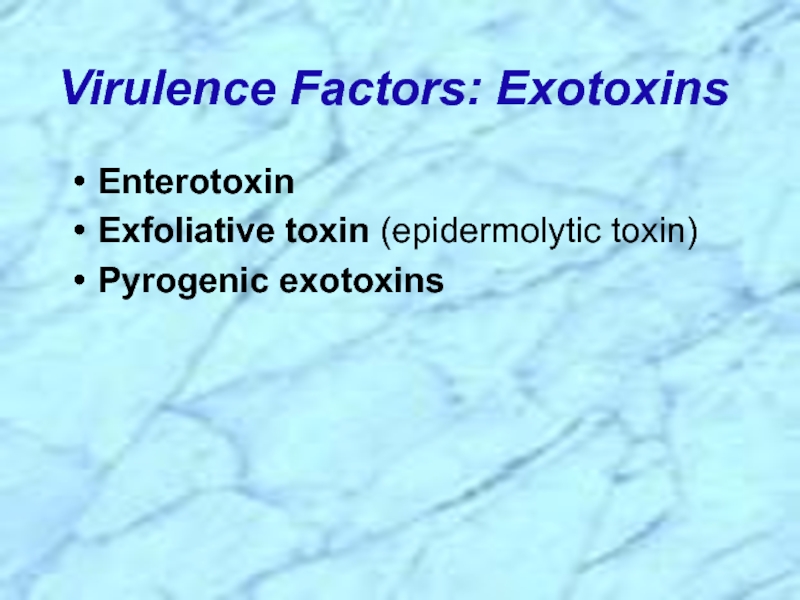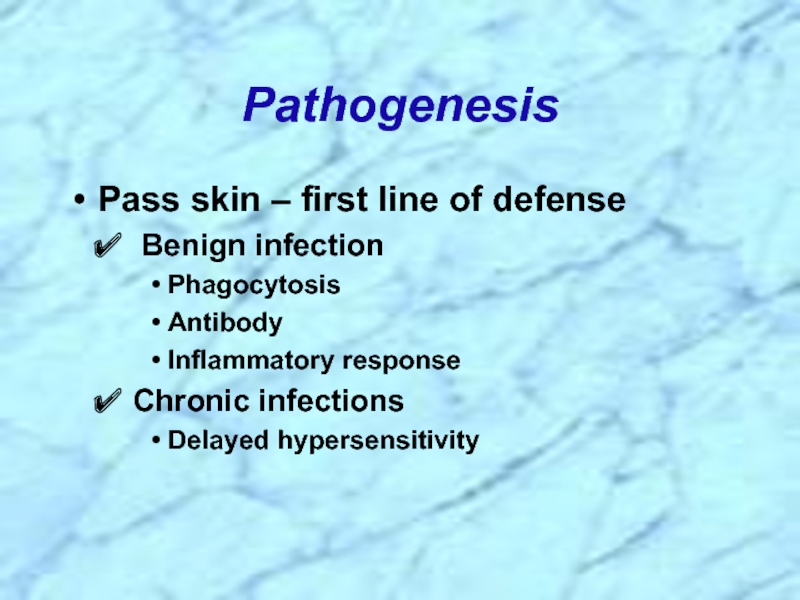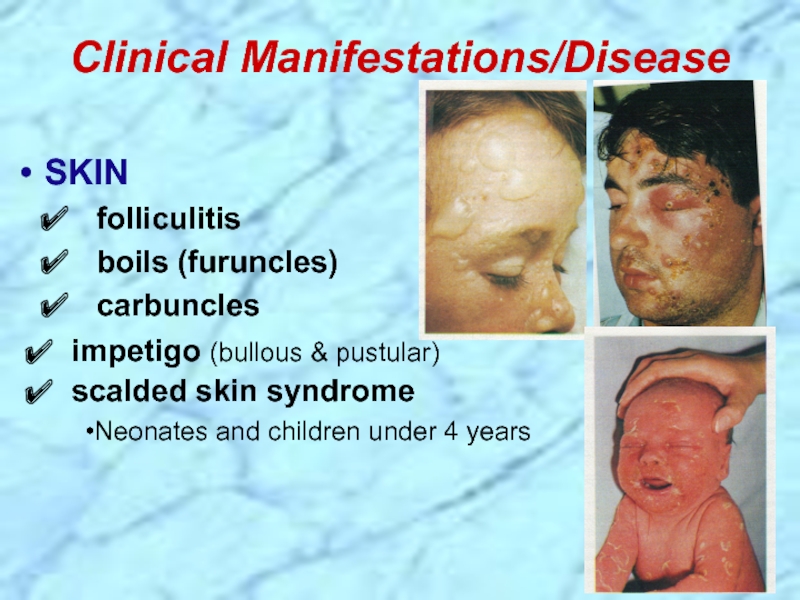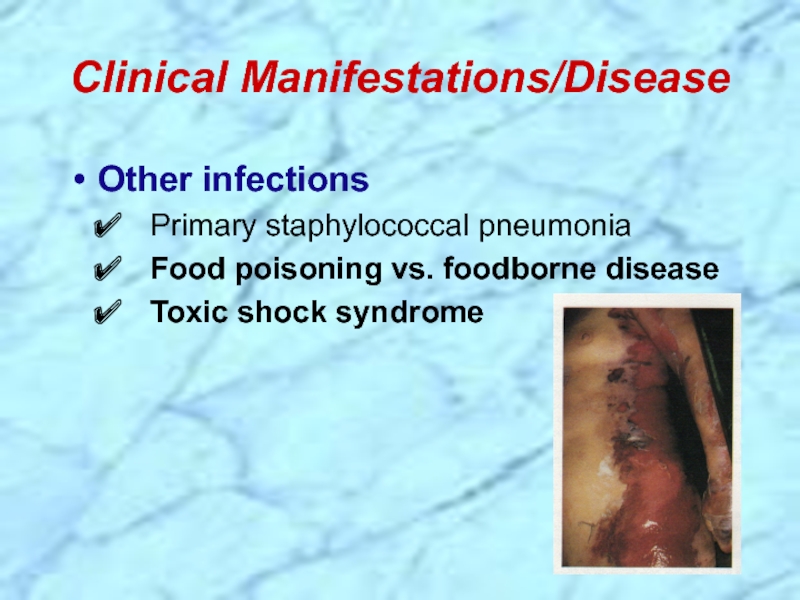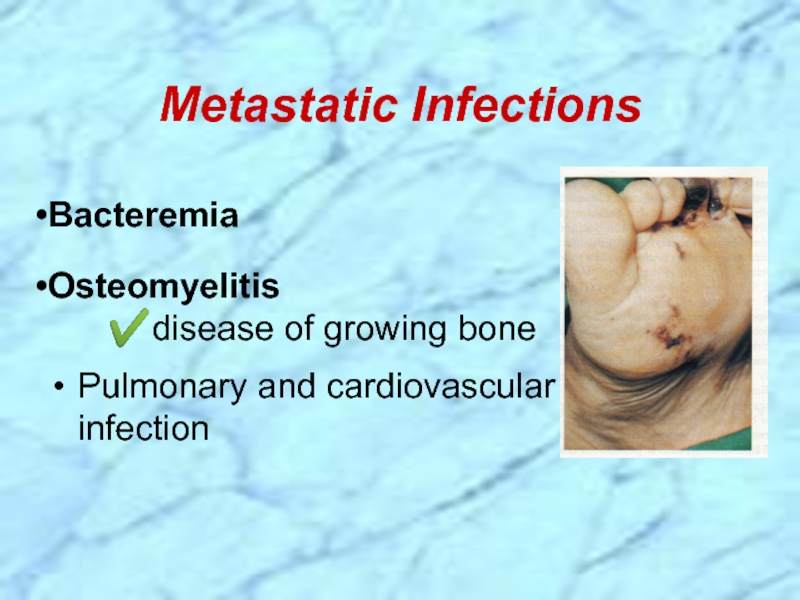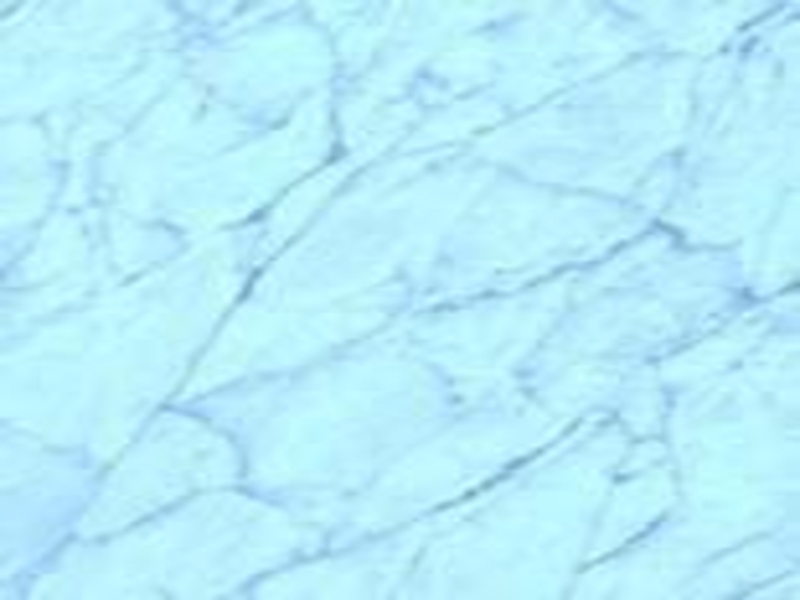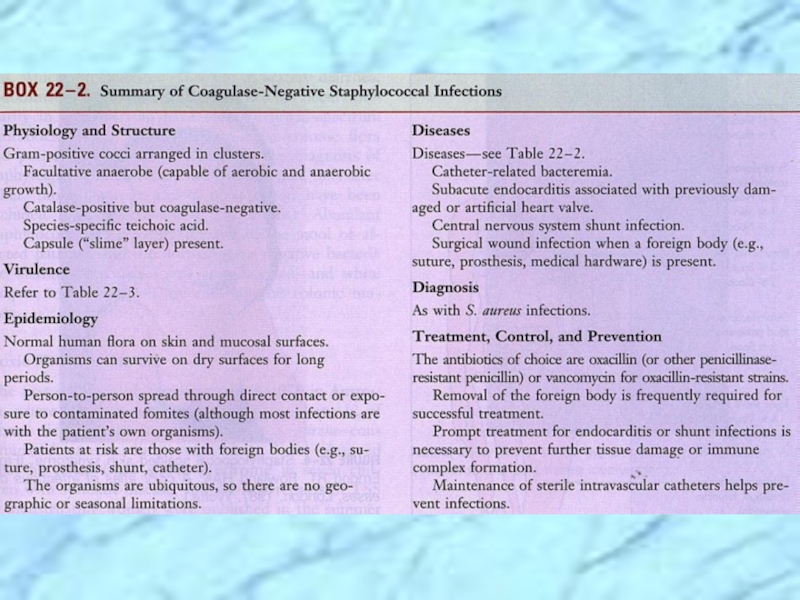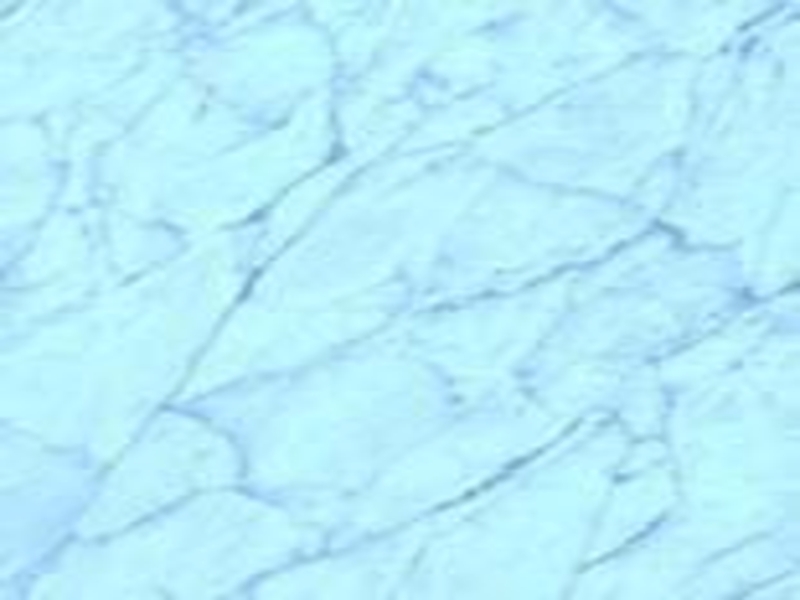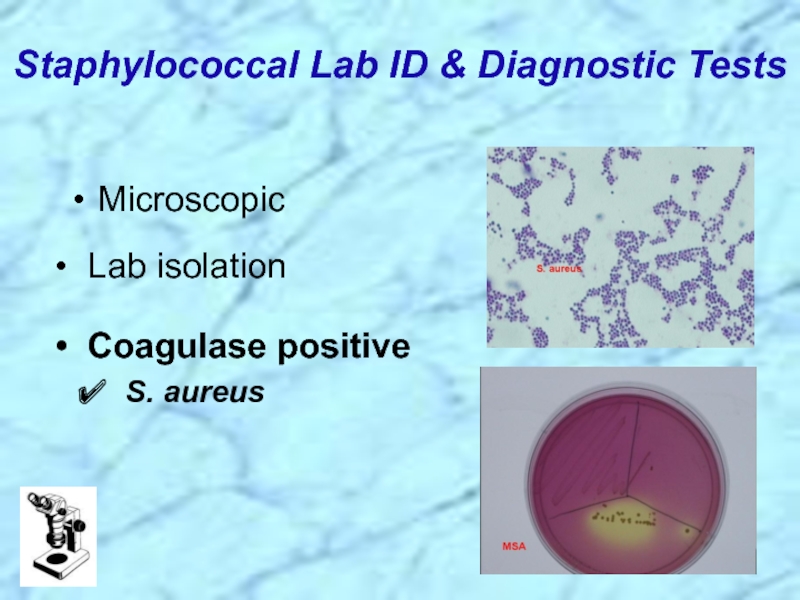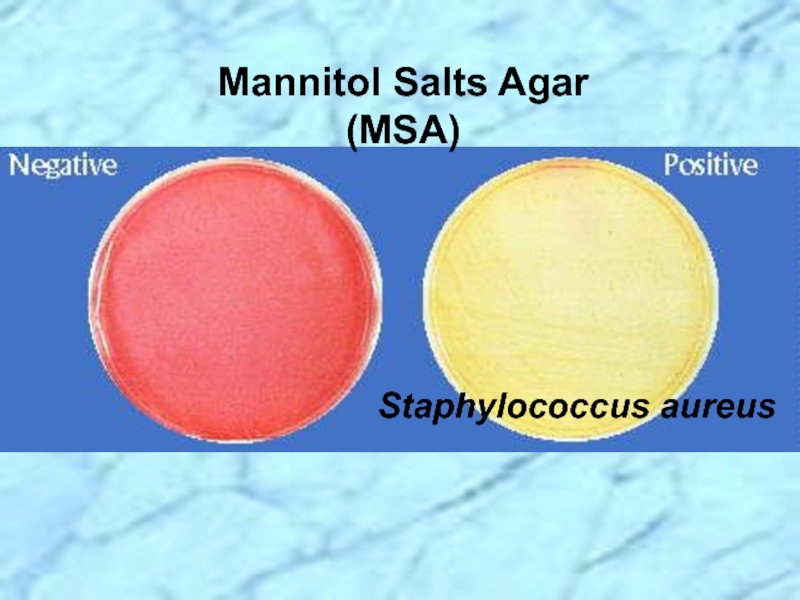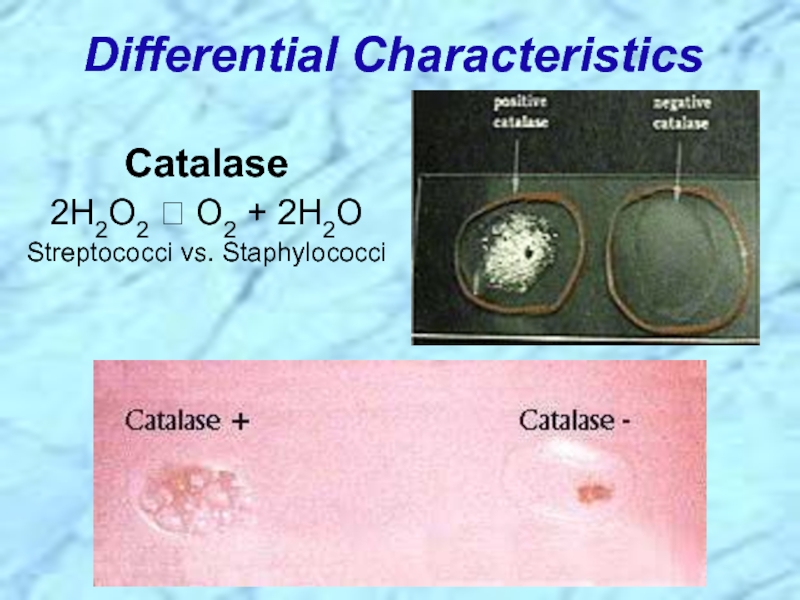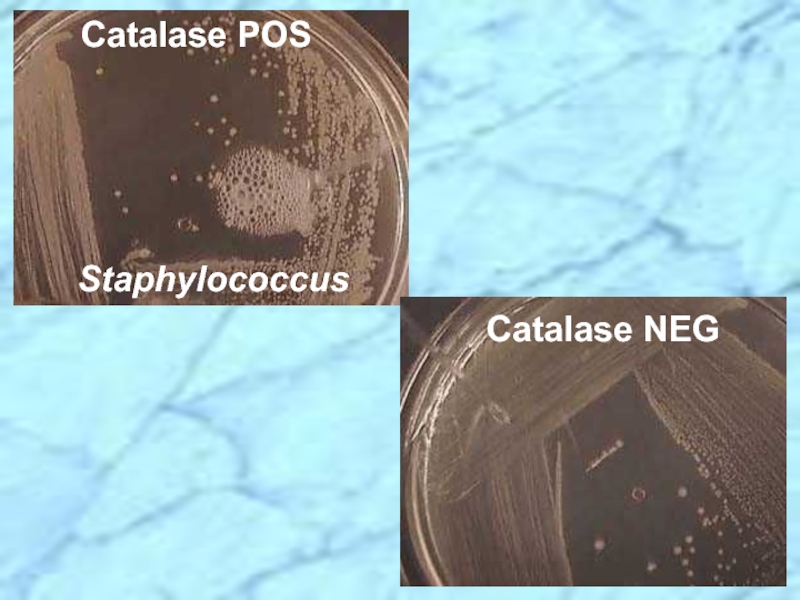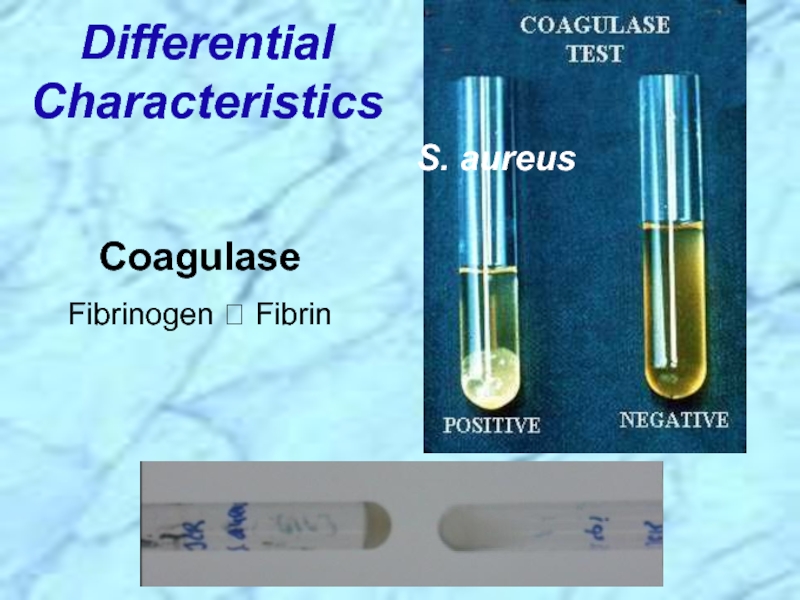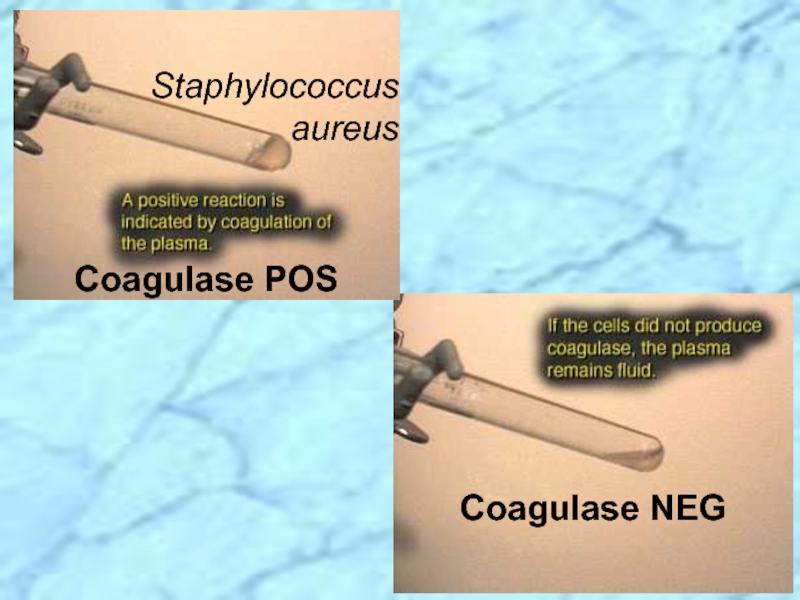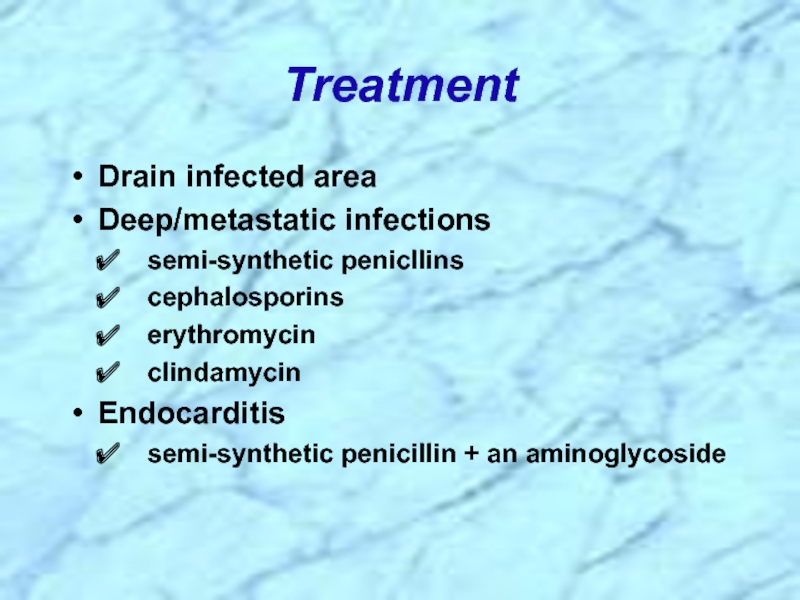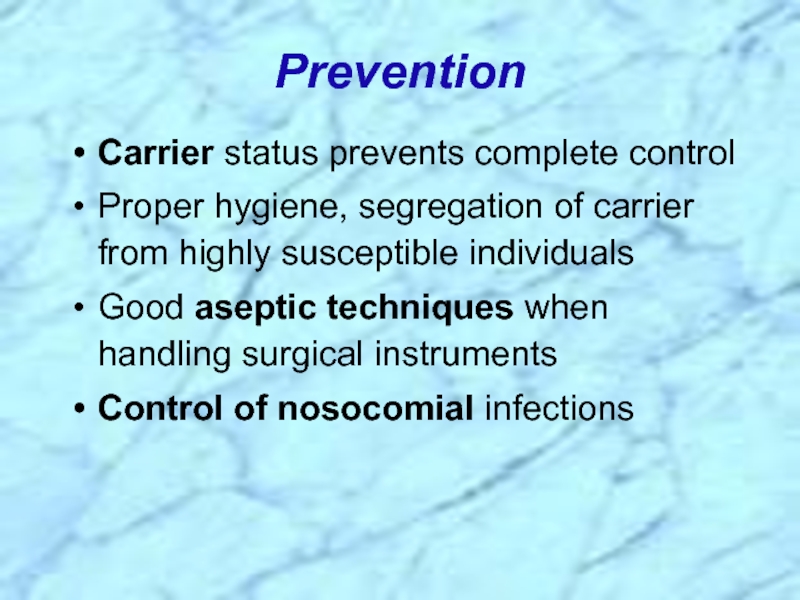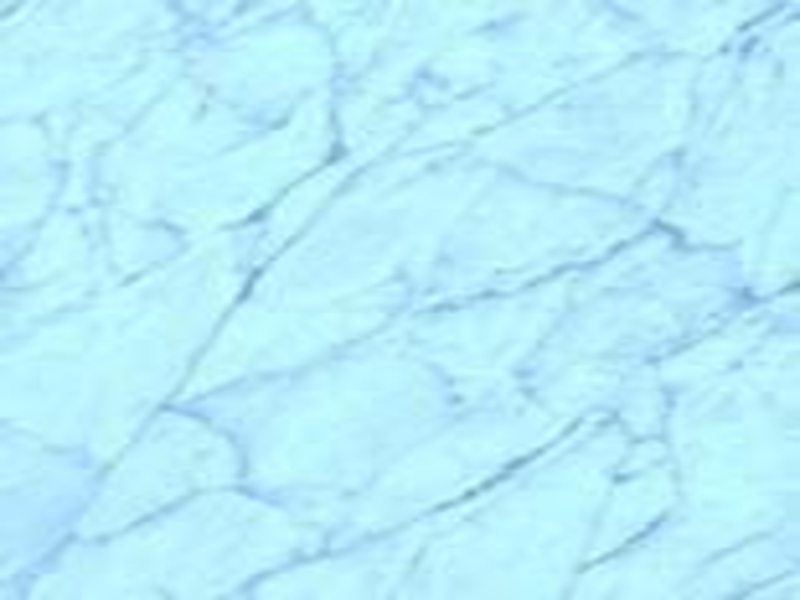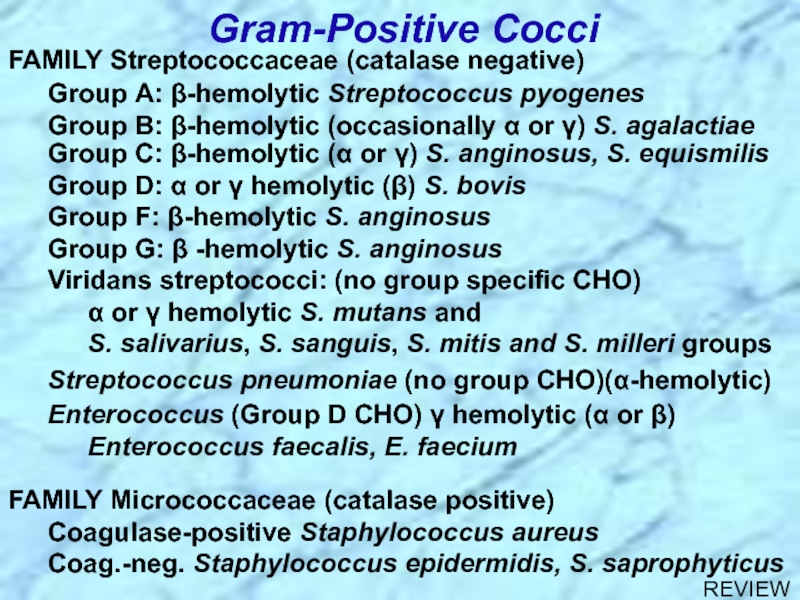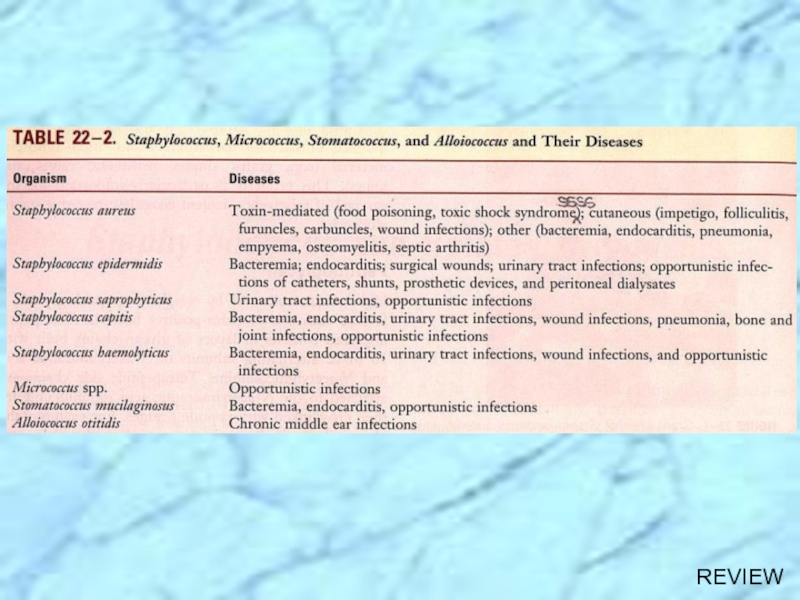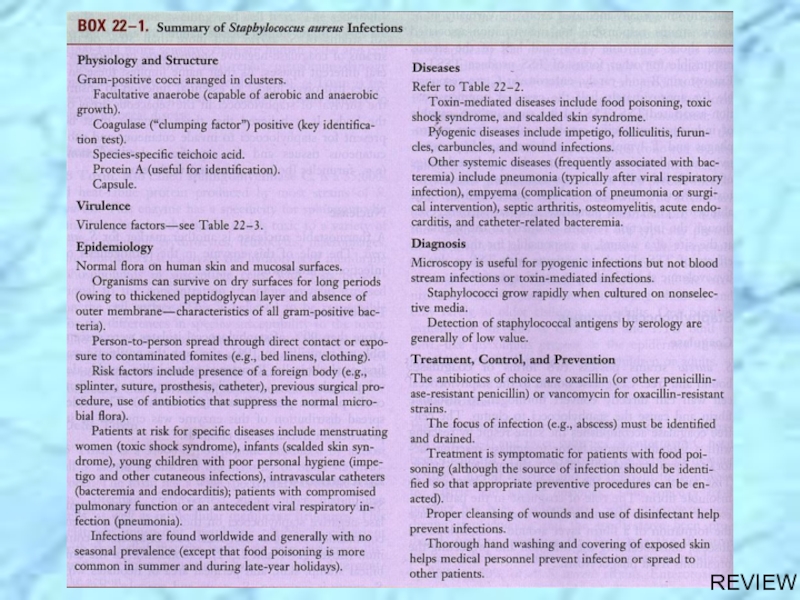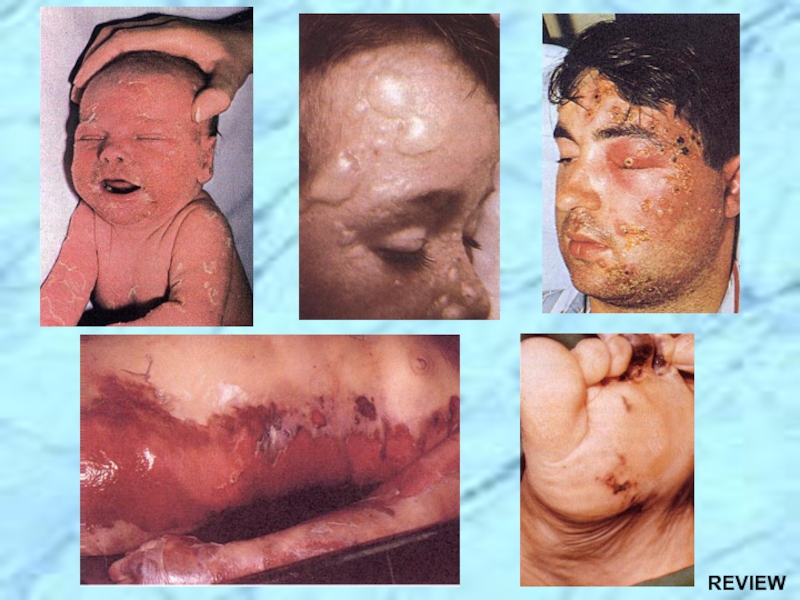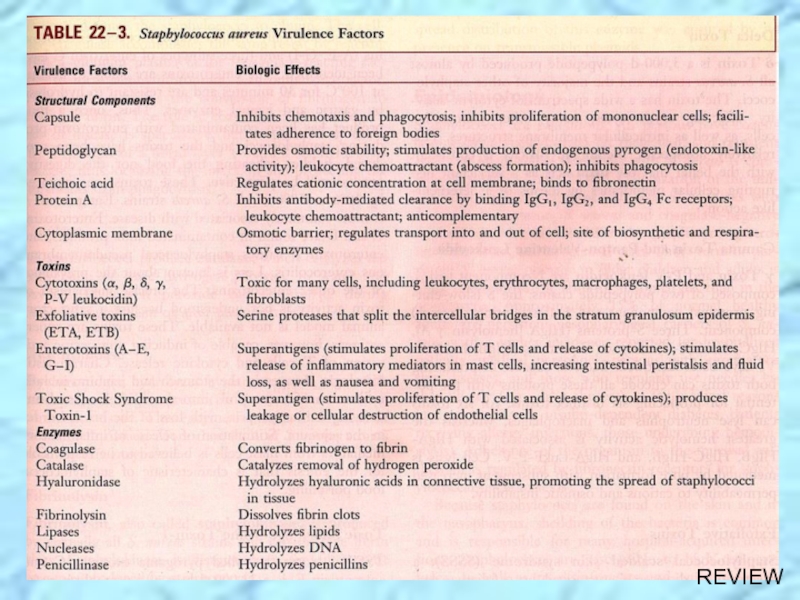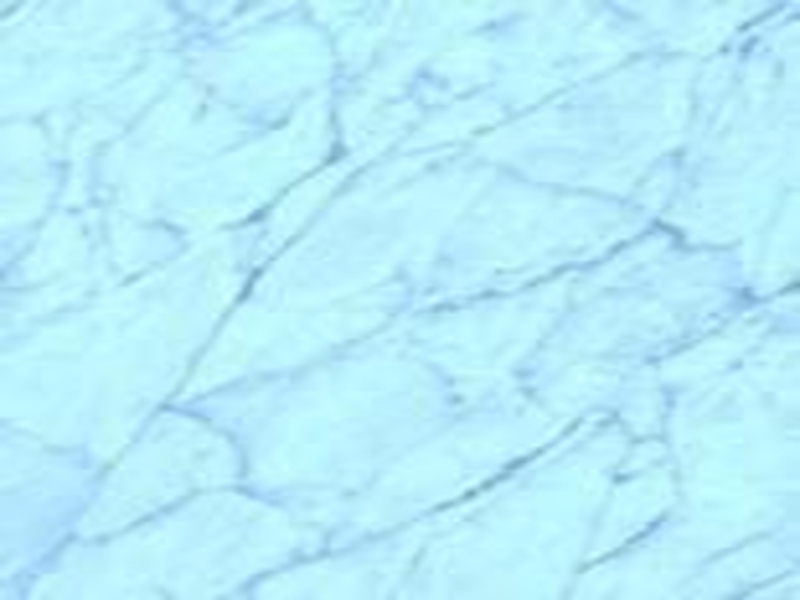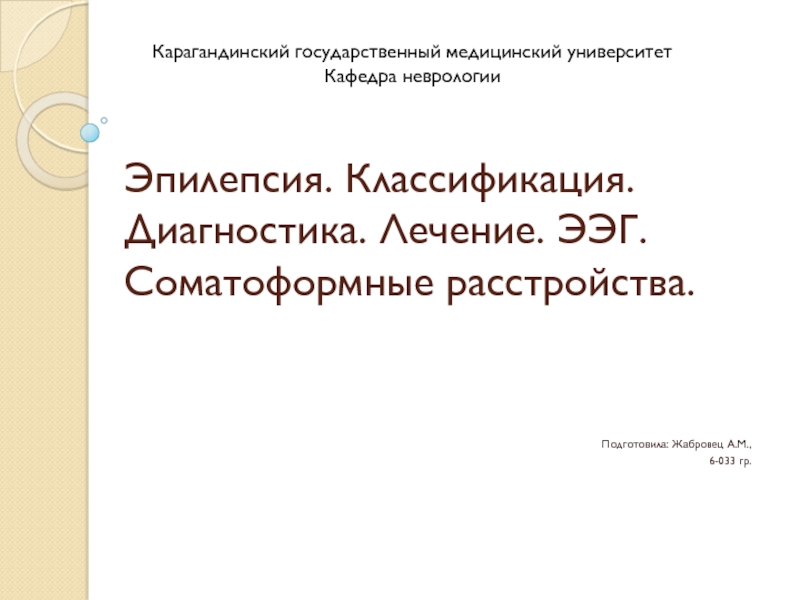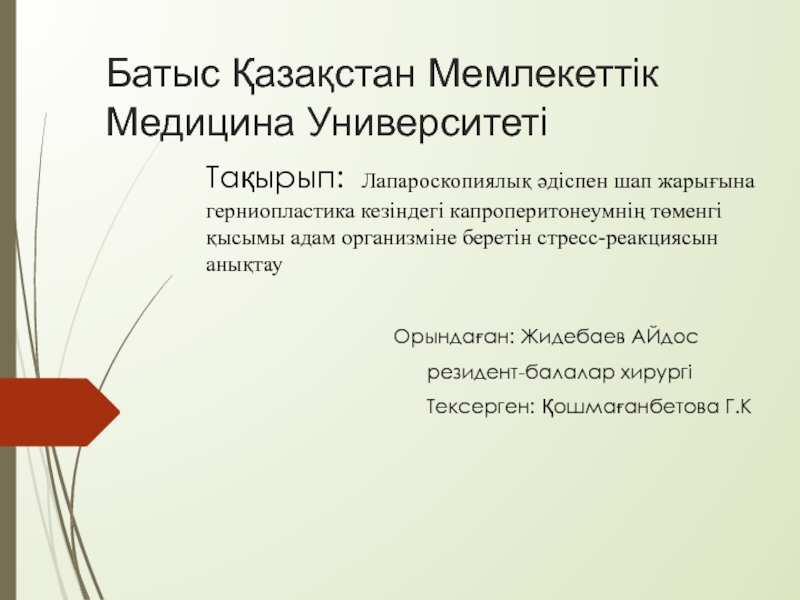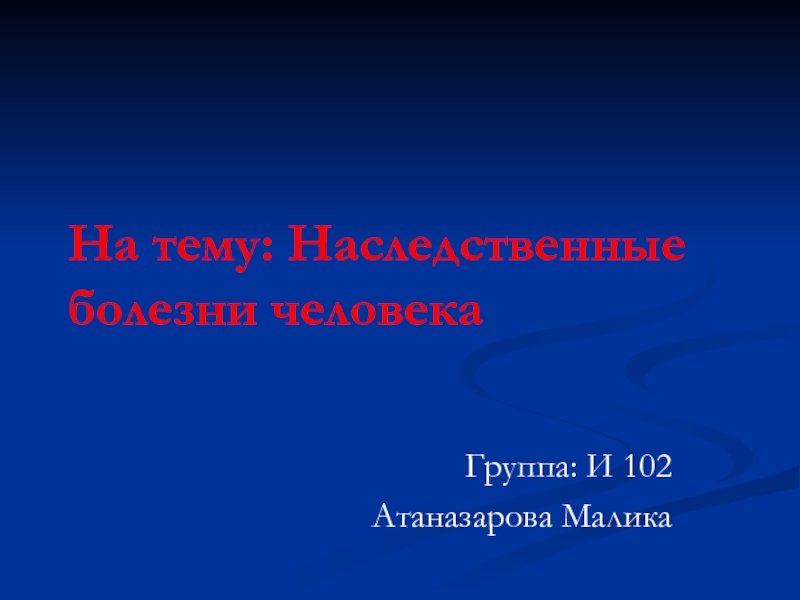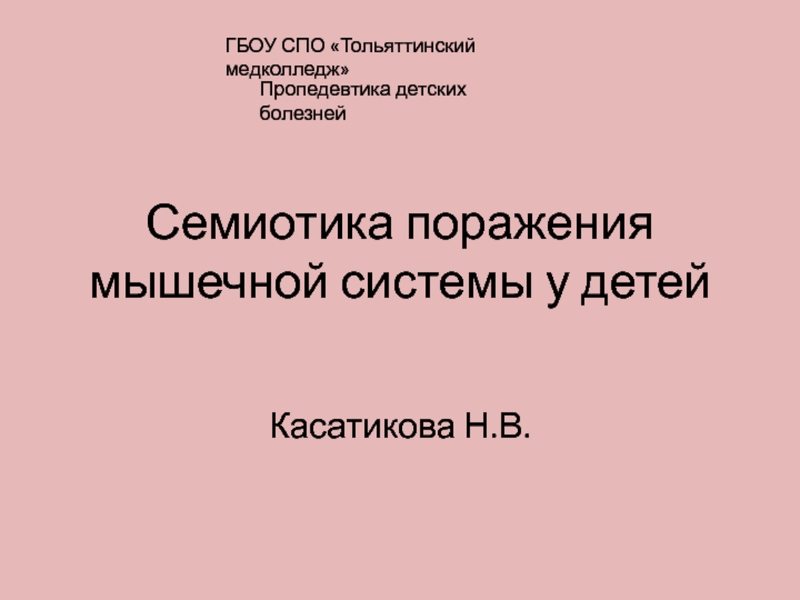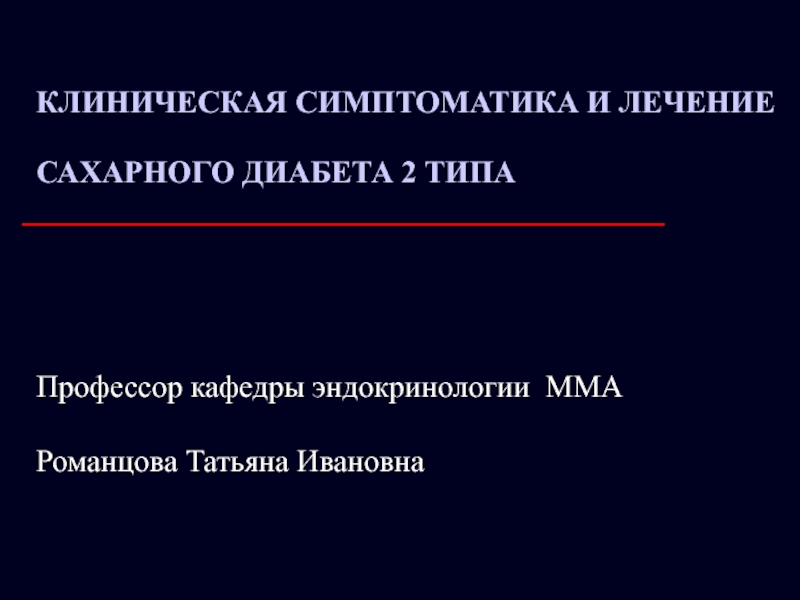- Главная
- Разное
- Дизайн
- Бизнес и предпринимательство
- Аналитика
- Образование
- Развлечения
- Красота и здоровье
- Финансы
- Государство
- Путешествия
- Спорт
- Недвижимость
- Армия
- Графика
- Культурология
- Еда и кулинария
- Лингвистика
- Английский язык
- Астрономия
- Алгебра
- Биология
- География
- Детские презентации
- Информатика
- История
- Литература
- Маркетинг
- Математика
- Медицина
- Менеджмент
- Музыка
- МХК
- Немецкий язык
- ОБЖ
- Обществознание
- Окружающий мир
- Педагогика
- Русский язык
- Технология
- Физика
- Философия
- Химия
- Шаблоны, картинки для презентаций
- Экология
- Экономика
- Юриспруденция
Staphylococcus. Classification презентация
Содержание
- 3. Classification Family Genus Species
- 4. Gram-Positive Cocci Enterococcus (Group D CHO) γ
- 5. Morphology
- 6. Morphology Staph vs. Strep Gram-positive cocci in clusters
- 7. Streptococcus Staphylococcus
- 8. Staphylococcus
- 12. See Overheads ~~~~~~~~~~ TSS Foodborne Intoxication ~~~~~~~~~~
- 15. Cell-Associated Virulence Factors Capsule or slime layer
- 16. Virulence Factors Extracellular Enzymes Coagulases (bound or
- 17. Virulence Factors: Exotoxins Cytolytic (cytotoxins; cytolysins)
- 18. Enterotoxin Exfoliative toxin (epidermolytic toxin) Pyrogenic exotoxins Virulence Factors: Exotoxins
- 19. Pathogenesis Pass skin – first line of
- 20. Clinical Manifestations/Disease SKIN folliculitis boils
- 21. Clinical Manifestations/Disease Other infections Primary staphylococcal
- 22. Metastatic Infections Bacteremia Osteomyelitis ✔disease of growing bone Pulmonary and cardiovascular infection
- 24. Coagulase-Negative Staphylococci Staphylococcus epidermidis S. saprophyticus
- 27. Staphylococcal Lab ID & Diagnostic Tests Microscopic
- 28. Mannitol Salts Agar (MSA) Staphylococcus aureus
- 29. Catalase 2H2O2 ? O2 + 2H2O Streptococci vs. Staphylococci Differential Characteristics
- 31. Coagulase Fibrinogen ? Fibrin Differential Characteristics
- 33. Treatment Drain infected area Deep/metastatic infections
- 34. Prevention Carrier status prevents complete control Proper
- 36. REVIEW
- 37. Gram-Positive Cocci Enterococcus (Group D CHO) γ
- 38. REVIEW Which features are only found in S. aureus? S. epidermidis S. aureus
- 39. REVIEW
- 40. REVIEW
- 41. REVIEW
- 42. REVIEW
- 43. REVIEW
Слайд 3Classification
Family
Genus
Species
Micrococcaceae
Micrococcus and Staphylococcus
S. aureus
S. saprophyticus
S. epidermidis
M. luteus
more than 20 species
Слайд 4Gram-Positive Cocci
Enterococcus (Group D CHO) γ hemolytic (α or β)
Enterococcus faecalis,
FAMILY Micrococcaceae (catalase positive)
Coagulase-positive Staphylococcus aureus
Coag.-neg. Staphylococcus epidermidis, S. saprophyticus
FAMILY Streptococcaceae (catalase negative)
Group A: β-hemolytic Streptococcus pyogenes
Group B: β-hemolytic (occasionally α or γ) S. agalactiae
Group C: β-hemolytic (α or γ) S. anginosus, S. equismilis
Group D: α or γ hemolytic (β) S. bovis
Group F: β-hemolytic S. anginosus
Group G: β -hemolytic S. anginosus
Viridans streptococci: (no group specific CHO)
α or γ hemolytic S. mutans and
S. salivarius, S. sanguis, S. mitis and S. milleri groups
Streptococcus pneumoniae (no group CHO)(α-hemolytic)
Слайд 15Cell-Associated Virulence Factors
Capsule or slime layer (glycocalyx)
Peptidoglycan (PG)
Teichoic acid is covalently
S. aureus ribitol teichoic acid (polysaccharide A)
S. epidermidis glycerol teichoic acid (polysaccharide B)
Protein A is covalently linked to PG
Clumping factor (bound coagulase)
Слайд 16Virulence Factors
Extracellular Enzymes
Coagulases (bound or free)
Antigenic
Hyaluronidase
“spreading factor” of S.
Nuclease
Cleaves DNA and RNA in S. aureus
Protease
Staphylokinase (fibrinolysin)
Lipases
Esterases
Слайд 17Virulence Factors: Exotoxins
Cytolytic (cytotoxins; cytolysins)
Alpha toxin - hemolysin
Reacts with
Beta toxin
Sphingomyelinase
Gamma toxin
Hemolytic activity
Delta toxin
Cytopathic for:
RBCs
Macrophages
Lymphocytes
Neutrophils
Platelets
Enterotoxic activity
Leukocidin
Слайд 18Enterotoxin
Exfoliative toxin (epidermolytic toxin)
Pyrogenic exotoxins
Virulence Factors: Exotoxins
Слайд 19Pathogenesis
Pass skin – first line of defense
Benign infection
Phagocytosis
Antibody
Inflammatory response
Chronic infections
Delayed
Слайд 20Clinical Manifestations/Disease
SKIN
folliculitis
boils (furuncles)
carbuncles
impetigo (bullous & pustular)
scalded
Neonates and children under 4 years
Слайд 21Clinical Manifestations/Disease
Other infections
Primary staphylococcal pneumonia
Food poisoning vs. foodborne disease
Слайд 22Metastatic Infections
Bacteremia
Osteomyelitis
✔disease of growing bone
Pulmonary and cardiovascular infection
Слайд 27Staphylococcal Lab ID & Diagnostic Tests
Microscopic
Lab isolation
Coagulase positive
S.
Слайд 33Treatment
Drain infected area
Deep/metastatic infections
semi-synthetic penicllins
cephalosporins
erythromycin
clindamycin
Endocarditis
semi-synthetic penicillin
Слайд 34Prevention
Carrier status prevents complete control
Proper hygiene, segregation of carrier from highly
Good aseptic techniques when handling surgical instruments
Control of nosocomial infections
Слайд 37Gram-Positive Cocci
Enterococcus (Group D CHO) γ hemolytic (α or β)
Enterococcus faecalis,
FAMILY Micrococcaceae (catalase positive)
Coagulase-positive Staphylococcus aureus
Coag.-neg. Staphylococcus epidermidis, S. saprophyticus
FAMILY Streptococcaceae (catalase negative)
Group A: β-hemolytic Streptococcus pyogenes
Group B: β-hemolytic (occasionally α or γ) S. agalactiae
Group C: β-hemolytic (α or γ) S. anginosus, S. equismilis
Group D: α or γ hemolytic (β) S. bovis
Group F: β-hemolytic S. anginosus
Group G: β -hemolytic S. anginosus
Viridans streptococci: (no group specific CHO)
α or γ hemolytic S. mutans and
S. salivarius, S. sanguis, S. mitis and S. milleri groups
Streptococcus pneumoniae (no group CHO)(α-hemolytic)
REVIEW

